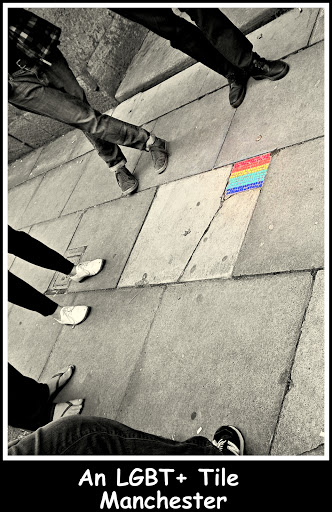On Thursday 16 June, the Never Going Underground Community Curators were taken on Paul Fairweather’s Manchester LGBT Heritage Trail. Keep an eye out for rainbow tiles on the streets of Manchester that mark significant places in the city’s LGBT history. You can find out more about the trail on the OUT! Manchester website. In this blog, Community Curator John Browne shares his notes and photos from the trail. It’s important to note, that we ran out of time to complete the whole trail, as the group were so engaged – sharing their stories and picking Paul’s (incredibly knowledgeable!) brain!
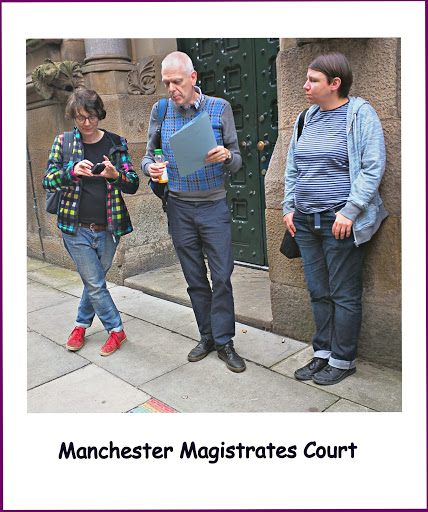
Manchester Magistrate’s Court
Paul Fairweather started the walk outside the Magistrate’s Court where many thousands of gay men had been prosecuted for consensual sex between males in public. A guilty verdict often resulted in loss of jobs, problems with family and friends, and rejection by many faith based organisations. Paul noted that many people committed suicide or had to leave their neighbourhoods because of press coverage. Paul spoke about many campaigns mounted by the LGBT+ community to reform the criminal justice system by highlighting unfair and unjust laws. He cited an example by the Campaign for Homosexual Equality to try and get the conviction of Bill Walker overturned in 1976.
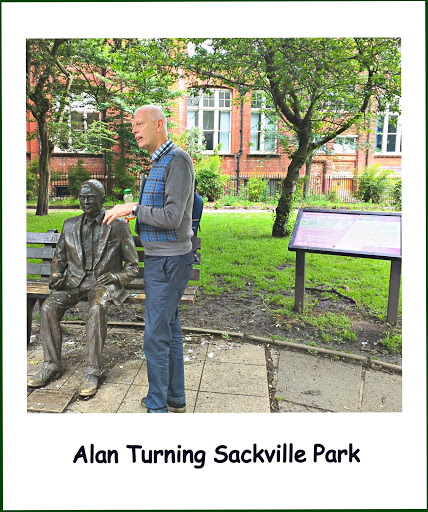
Alan Turing statue, Sackville Park
Here Paul explained the work of Alan Turing who is credited with the invention of the first digital computer, as well as playing a major role in World War II, by breaking the Enigma Code that German submarines used when attacking food and armament shipments heading to the UK. The life of Turing has been portrayed in a play and more recently in The Imitation Game 2014. Turing was subject to ‘hormonal treatment’ to try and ‘cure’ his gayness. After being arrested for admitting he was gay he committed suicide.
![]()
Beacon of Hope, Sackville Park
Manchester was one of the first UK cities to have a community help line providing information about AIDS. Set up in 1984 the service went on to become George House Trust. Paul spoke about early days, including the fight the local community won over the interment of Rodger Youd. Rodger wanted to leave hospital to go home to die. There was no treatment in 1984. Detained against his will a judge ruled he could go home. He died in hospital three weeks after his call to AIDS line, too weak to move any more. As a result the whole relationship between medical professionals and the LGBT+ community changed. People demanded that they should have a major say in the method and direction of treatment. Over the years Manchester individuals and groups pioneered many novel and innovative ways to make the world a better place for people with HIV and developed mass public education on prevention and risk reduction. The beacon of hope salutes past struggles and lights the way to a brighter future.
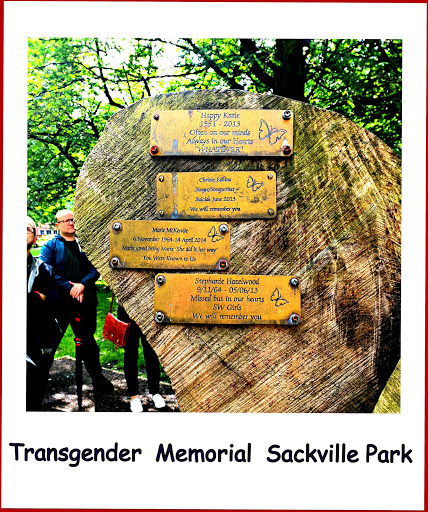
Transgender Memorial, Sackville Park
We visited the Transgender Memorial which contains the names of trans* persons who have died due to oppression and harassment. Each year Manchester hosts Sparkle
Community fight back
Whilst taking a break from the walk Paul gave numerous examples of the way the community had fought back against police harassment in Manchester
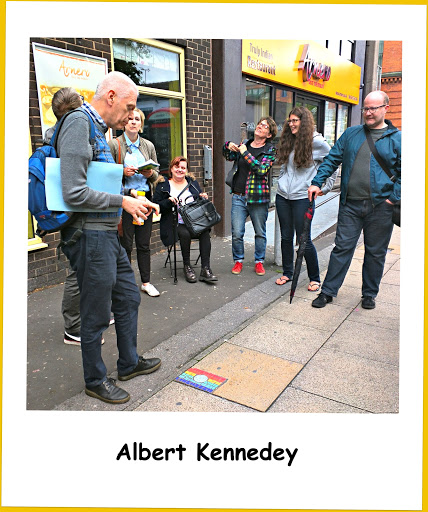
Albert Kennedy
This tile marked the spot where Albert Kennedy fell to his death. Driven to suicide whilst in the care of Salford City Council . This entirely preventable tragedy prompted the establishment of the Albert Kennedy Trust. Over the years AKT has provided support and fostering to LGBT+ youth so they could go on to lead full and fulfilling lives.
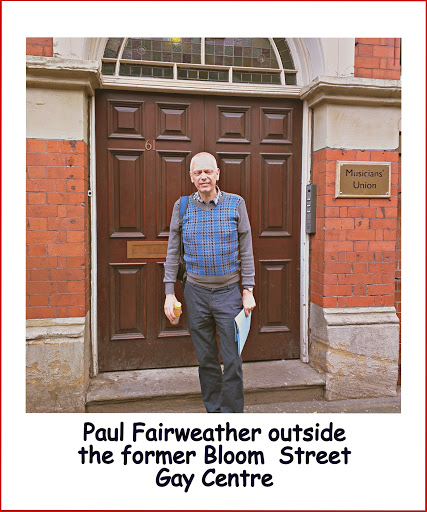
Bloom Street Gay Centre
Paul worked at 61A Bloom Street the home of Manchester Gay Centre. A UK first funded by an urban aid grant, the centre become the heart of LGBT+ support and activism in the 1980s. The LBGT+ world is not immune to fall outs rows and splits. Bloom Street was the stage where huge battles about issue such as PIE, separatism, the inclusion of bisexuals, gender and identity politics took place. Members of the centre were key to offering a vision of the type of society we wanted to build. Inevitably ongoing tensions resulted in a split between Gay Men and Lesbians in the city.

CHE
Paul moved to Manchester to become a worker for the Campaign for Homosexual Equality. The tile is located near the now defunct Manchester office. In conversation the group learnt about the role of activists in Burnley who had taken a huge stride to establish a LGBT+ movement and use LGBT+ visibility to show we really are everywhere. Throughout the walk Paul shared examples of his extensive archive of historical leaflets, magazines and notes from the 1970s & ‘80s many of which we hope to copy and get into the PHM archive. For more wonderful detail about the part Burnley played in our liberation and the courageous Mary Winters tale, sacked from the omnibus company for wearing a Lesbian Lib badge visit http://www.lGBThiddenhistory.co.uk
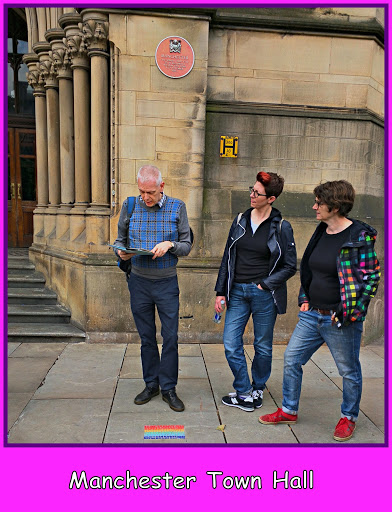
Manchester Town Hall
The final stop was Manchester Town Hall. Paul reeled off list of Manchester firsts that emanated from this building:
- Lesbians & Gay men’s committees
- Full time officers working on LGBT+ issues
- The first Lesbian Lord Mayor in the UK
- Support to LGBT+ community groups by way of grants
- Political support to get legal reform and changes in employment and education that supported LGBT+ lifestyles
- The Mardi Gras /Pride parades
- A purpose built LGBT+ centre
- The fightback against section 28
After answering many questions Paul concluded the walk and reflected on how amazing Manchester and its people have been, taking what were radical ideas and concepts and making them everyday for LGBT+ people in the city. We know that activism has to adopt and change to deal with new challenges ‘somewhere’ in the future a new chapter for the LGBT+ heritage trail is being laid down right now.
